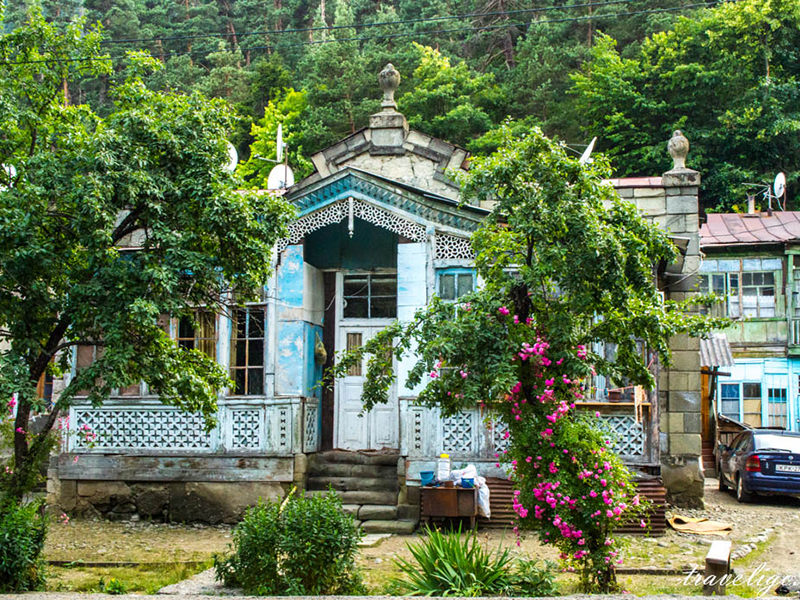Abastumani

Abastumani is an urban-type settlement (since 1926) in Adigeni municipality (Samtskhe-Javakheti region) situated on the southern slope of Meskheti Range in the Otskhe River (Abastumantskali) gorge. It is on an elevation of 1340 meters from the sea level, 210 kilometers from Tbilisi, 28 kilometers from Akhaltsikhe (the nearest rail station), and 24 kilometers from Adigeni.
Abastumani is a mountainous balneological resort. It has a moderately humid climate. Long, cold, and snowy winters (average temperature in January is -5,4°C) are common here and summers are warm (average temperature in August is 17,3°C). Precipitation is 620 mm per year, and relative humidity in summer is above 48%. Sunshine duration is 1967 hours annually. Abastumani and nearby mountains are covered by pine trees. Due to this, the air in the settlement is ecologically clean and fresh.
The main natural healing properties of Abastumani come from its climate. People come here to treat lung pathologies and rehabilitation.
Since ancient times, it has been well known and agreed that thermal mineral waters in Abastumani have healing properties.
The chemical composition of the thermal waters is the sulfate-chloride and kalium-natrium. There are three springs with this composition (Goliati, Gveli, Suravandi). Daily discharge reaches 1 million liters. The water temperature is 39-48°C.
Thermal mineral waters are used to treat peripheral nervous system, skin diseases, and urinary and reproductive organs.
In Abastumani, Charity fund Cartu built Abastumani Lung Center (Ltd) according to modern standards and equipped with the newest medical equipment. The construction and rehabilitation of roads is underway and underground communication systems were renewed. Touristic infrastructure is being developed, rehabilitation of old historical buildings is underway (M. Sh. Romanov’s Palace), and new complex hotels are being built.
Near Abastumani, on Mt. Kanobili (1650 meters from sea level) there is the E. Kharadze Georgian National Astrophysical Observatory, which was founded in 1932.
There are some theories that the fortified city of Odzrakhe (Odzrkhe), mentioned in 9th-10th century Georgian historical sources, was located on Abastumani territory. Historian, geographer, and cartographer Vakhushti Batonishvili confirms that in the 14th century, in place of Abastumani, there used to be Odzrkhe city famous for medicinal thermal water. By the late middle centuries name Otskhe (a modified version of Odzrkhe) became more widely used. From the 19th century, this urban-type settlement became Abastumani, probably named after the neighboring village.
Apart from some old fortification ruins, nothing remains from Odzarkhe city. One fort is near Varkhan village, and another called Fortress of Tamar is located on top of a forest-cowered mountain located near Abastumani, on the right bank of the Otskhe River. In lower Abastumani, on the left side of the river, there is a domeless church. Despite the fundamental transformation, this church still retained its old parts: a big ornate cross and cornice-covered small windows on the western facade (approx. 14th century). There is a 12-13th century historical bridge over the Otskhe River.
In the center of his urban-type settlement is a church, which was built (1899-1904, by architect O. Simonson) on the orders of G. Romanov - a member of the Russian royal family. G. Romanov had tuberculosis and for this reason, he moved from St. Petersburg to Abastumani. He was the one who had Zarzma monastery’s old church renovated because he was impressed by its beauty. For this reason, it looks like the church was built according to the old Zarzma (it’s now called the new Zarzma). The interior was painted by famous Russian painter N. Nesterov (1902-1904).
Ts. Vashakidze


